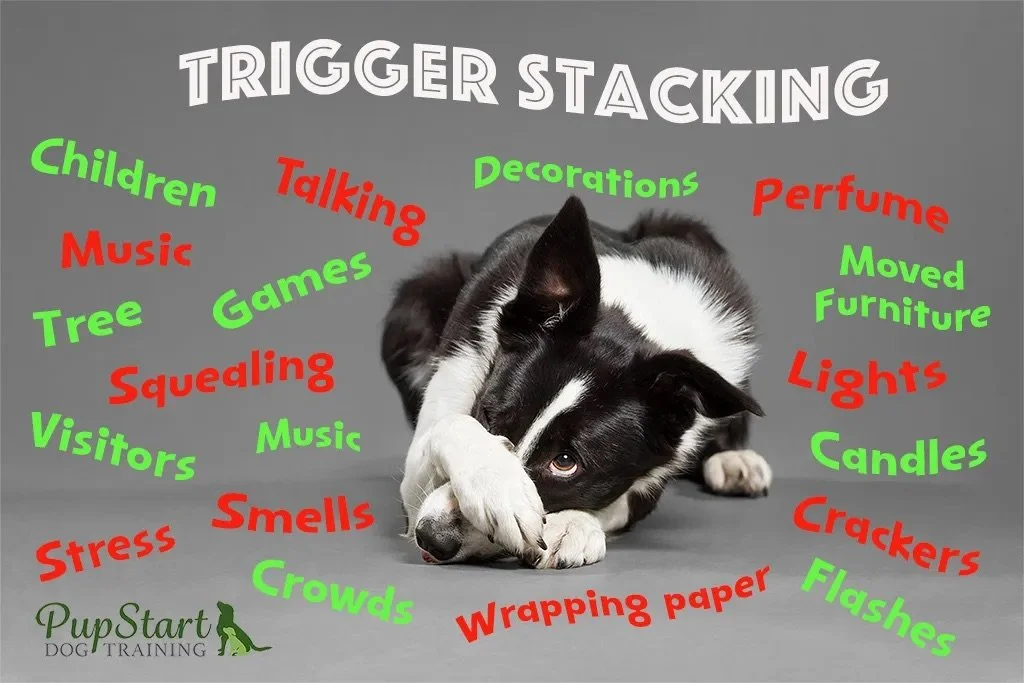Trigger stacking 101
Congratulations on your new family member and welcome to the Doggedly family!
Bringing a new dog home is one of the most exciting times of many people's lives, and it's equally exciting for your dog. Despite the excitement, change in routine can be super scary for dogs.
The biggest phenomenon to consider during this time is trigger stacking or the layered stress model.
To put it simply - stress accumulates in us and our dogs and may make us react differently to things than we have in the past or even will in the future.
Imagine this:
Your phone dies during the night, you miss your alarm, you're running late for work, you're not able to get your much needed cup of coffee, then you get stuck in traffic. BLAH!
These things alone are building up inside you whether you're aware of it or not. You may not show it but you're feeling increasingly more anxious as time goes by. Then, suddenly, some JERK cuts you off and makes you slam on your breaks in this stop and go mess of a traffic jam.
On a normal day, you may just let this slide and scoff to yourself about bad drivers in your area but today is NOT THAT DAY!
You lay on your horn, you scowl, you may even flip that driver the bird.
Now, if I were doing a documentary on your life, and I selected that moment (reaction to being cut off) as an overall picture of your personality I would most likely be completely off base -- the same goes for our furry friends.
When you (who are currently a stranger to the dog) bring them home to a completely new environment, with new sights, smells, sounds, dogs, cats, other animals, children etc all of these things will excite and at the same time stress them out.
They may not show it but dogs are stoic.
They may be excited, happy, jumping on you, licking your face -- but then maybe your incumbent dog stares at them for too long, your child screams at something hilarious on television, you drop a pot/pan in the kitchen accidentally -- and your new dog jumps, barks, growls etc...
This is not an indication of their
overall personality this is a product of new environment + stress accumulation.
The best way to avoid this is by strict management of your environment for at least the first week, but ideally 14 days to allow your dog to settle in, get to know your family, and take what we call a cortisol vacation -- or more simply a stress vacation.
Check out our blog - Decompression and Integration for a step by step guide!


